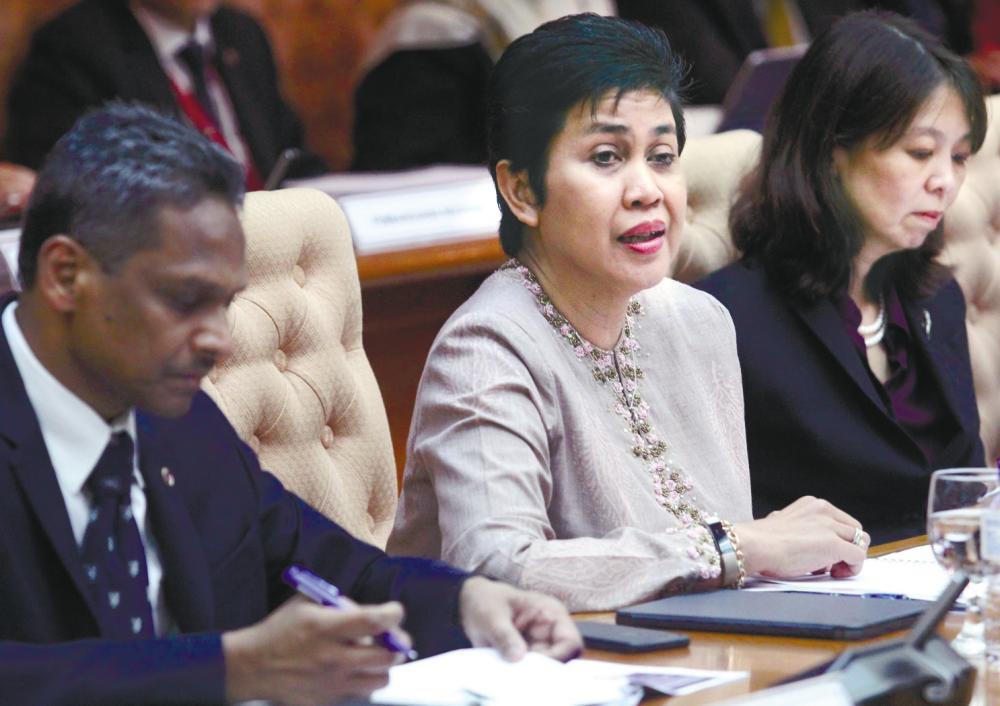KUALA LUMPUR: Given the persistent external headwinds emanating from, among others, the US-China trade spat and the Brexit deadlock, Bank Negara Malaysia (BNM) sees more downside risks in the domestic economy, projecting a gross domestic product (GDP) growth of 4.3% to 4.8% for 2019.
This is lower than the government’s earlier projection of 4.9% during the tabling of Budget 2019. Last year, the economy grew 4.7%.
Governor Datuk Nor Shamsiah Mohd Yunus said the revised GDP growth projection was due to slower global economic expansion, which has been revised downwards.
At a media briefing today in conjunction with the release of the BNM Annual Report 2018, she said domestic demand will remain the anchor of growth on the back of continued expansion in private sector activity.
However, private consumption growth is expected to moderate to 6.6% this year, while private investment is projected to register a stronger expansion of 4.9%.
Public consumption is projected to expand at a moderate pace of 1.2% and public investment is estimated to decline 7.1%.
Despite an expected slower economic growth in 2019, Nor Shamsiah opined that it will not dampen consumers’ sentiment and private consumption will always hold up as the bulk of the consumption is spent on daily necessities.
On the supply side, all economic sectors will continue to grow in 2019 with the services and manufacturing being the key contributors.
Nor Shamsiah believes the global economy will not fall into a recession and the external growth will continue to support Malaysia’s export growth, which is estimated to expand 3.4% this year compared with 6.8% in 2018.
The current account balance is projected to remain in surplus, albeit narrowing to 1.5% to 2.5% of gross national income.
Commenting on monetary policy, Nor Shamsiah said the central bank has been closely monitoring developments and will focus on supporting economic growth.
“Any adjustment to the OPR does not immediately suggest that there are risks to growth as we are not a growth-targeting central bank,” she said, referring to the Overnight Policy Rate.
Nor Shamsiah also alleviated market concerns over deflation seen in the first two months of the year, reiterating that there is no collapse in demand conditions.
“We’re not suffering from deflationary pressure. Deflation occurs when price declines are broad based. More than 50% of goods in the CPI basket are experiencing increase in prices. The decline in headline inflation is solely due to transport cost and high base effect.”
Headline inflation, as measured by the CPI (Consumer Price Index), is projected to increase 0.7% to 1.7% this year. The CPI declined by 0.4% and 0.7% in January and February, respectively.
On Finance Minister Lim Guan Eng’s call for banks to be more flexible in lending, Nor Shamsiah does not see banks tightening lending, evidenced by the highest ever loan disbursement growth of 7.3% in 2018 against 5% in 2017.
Malaysia’s external debt stood at RM924.9 billion as at end-2018 or 64.7% of GDP, higher than the RM885.2 billion (65.4% of GDP) as at end-2017, mainly due to the increase in interbank borrowings and corporate loans to finance investment activity as well as valuation effects following the weakening of the ringgit.
“Under the baseline projection, external debt will decline to 56% of GDP by 2023 facilitated by continued account surplus and economic growth, faced against the adverse shocks of external debt that will rise above the baseline projection but remain manageable due to Malaysia’s debt profile and external buffers,” Nor Shamsiah explained.










